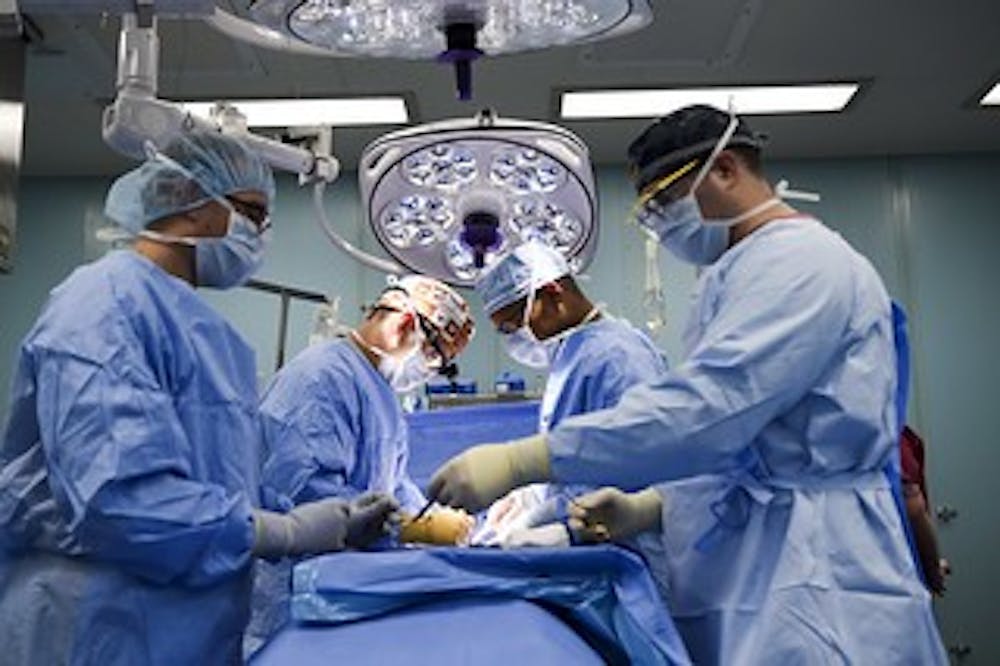Dr. Arash Kheradvar of University of California, Irvine discussed how his interest in heart valves began in his talk “Emerging Trends in Heart Valve Engineering and its Translation to Clinical Medicine” on Oct. 25. Using Leonardo da Vinci’s discoveries, he began further research into heart valves in 2002 at the California Institute of Technology.
Da Vinci is one of the greatest influences in the field of biotechnology. He extensively studied human anatomy and was the first person to understand the hemodynamics of the aortic sinus, which is believed to be correlated to calcific aortic valve disease (CAVD).
CAVD is a growing interest in the medical field because of the increasing number of heart-valve transplants occurring in the rising number of people with various heart conditions. This area of research turned out to be a passion for Kheradvar.
“Wherever there is a gap in helping patients, I try to use my engineering knowledge to address those clinical, unmet needs,” he said during the presentation.
Previously, surgical intervention as a treatment for structural heart-valve disease was a long and complicated process. It required open heart surgery, a chest crack, exposure of the heart, connection of the patient to a bypass and a month-long period of recovery before the patient could return to their normal life.
However, with the development of the transcatheter heart valve, the entire procedure was reduced to 20 minutes and allowed the patient to leave the hospital the next day. The stent is made of an alloy that has a tissue material for the valve crimped inside the stent. Crimping is the process by which the diameter of a stent is reduced while a living tissue is attached.
This leaflet crimping does not occur with surgical valves, so a unique set of problems arose with this new method. Stent crimping requires the generation of a radial force on very delicate tissue. Kheradvar gave an analogy to explain this complex procedure.
“Imagine a sharp knife applying pressure on a very delicate piece of cheese,” he said.
Engineers are motivated to create smaller and smaller stents because a smaller stent can be utilized in many more patients, and a smaller stent requires more crimping. However, it was discovered that permanent damages occurred to the tissues as a result of this crimping. The more aggressive the crimping was, the more damage that was created.
The question that drove Kheradvar’s work is what level of damage is tolerable and what is the threshold for that damage being clinically relevant?
According to Kheradvar, many clinicians were not initially concerned with the durability of the heart valves. Kheradvar was the only one who seemed to be invested in answering this question. This was because this minimally invasive surgical procedure was developed for a very specific demographic: people typically over 85 years old who could not survive open heart surgery but who still required some type of medical intervention.
Due to the advanced age of these patients, the durability of the stents was a relatively inconsequential point. As the field progressed and these procedures were performed on younger and younger patients, the durability of these stents came into question again.
The biggest issue arose with calcifications, or small calcium deposits, that formed on the implanted heart valves. What Kheradvar found was that calcifications actually occurred on native hearts as well, but they only occurred on the aortic side — never on the ventricular side.
With the failed transcatheter heart valves, he noticed that the calcifications would develop on the ventricular side as well. He hypothesized that the micro-injuries introduced to the leaflet by crimping allowed for the calcifications to form. This created an unacceptably low survival rate of the patients who received these stents. One example of these valves is the Edwards valve.
“For example, with the Edwards valve, eight years after implantation, only 9.6 percent of the patients survived,” Kheradvar said.
This fueled the passion that motivates his research interests and work. Kheradvar’s lab has since developed four different heart valve pipelines: FoldaValve (a transcatheter aortic valve), AValve (an atrioventricular valve system), HValve (a hybrid valve) and Dynamitral (a bi-leaflet valve). Since 2010, Kheradvar has been focused on developing a valve that does not require stent crimping.
This resulted in the development of the FoldaValve, in which the leaflets are crimped outside the stent. This is the smallest valve ever produced.
Kheradver’s efforts have been widely successful. One of his colleagues, Hopkins Mechanical Engineering Professor Rajat Mittal, boasted of his achievements.
“Arash has done some amazing work! He has over 50 publications and almost the same number of patents,” Mittal said.





